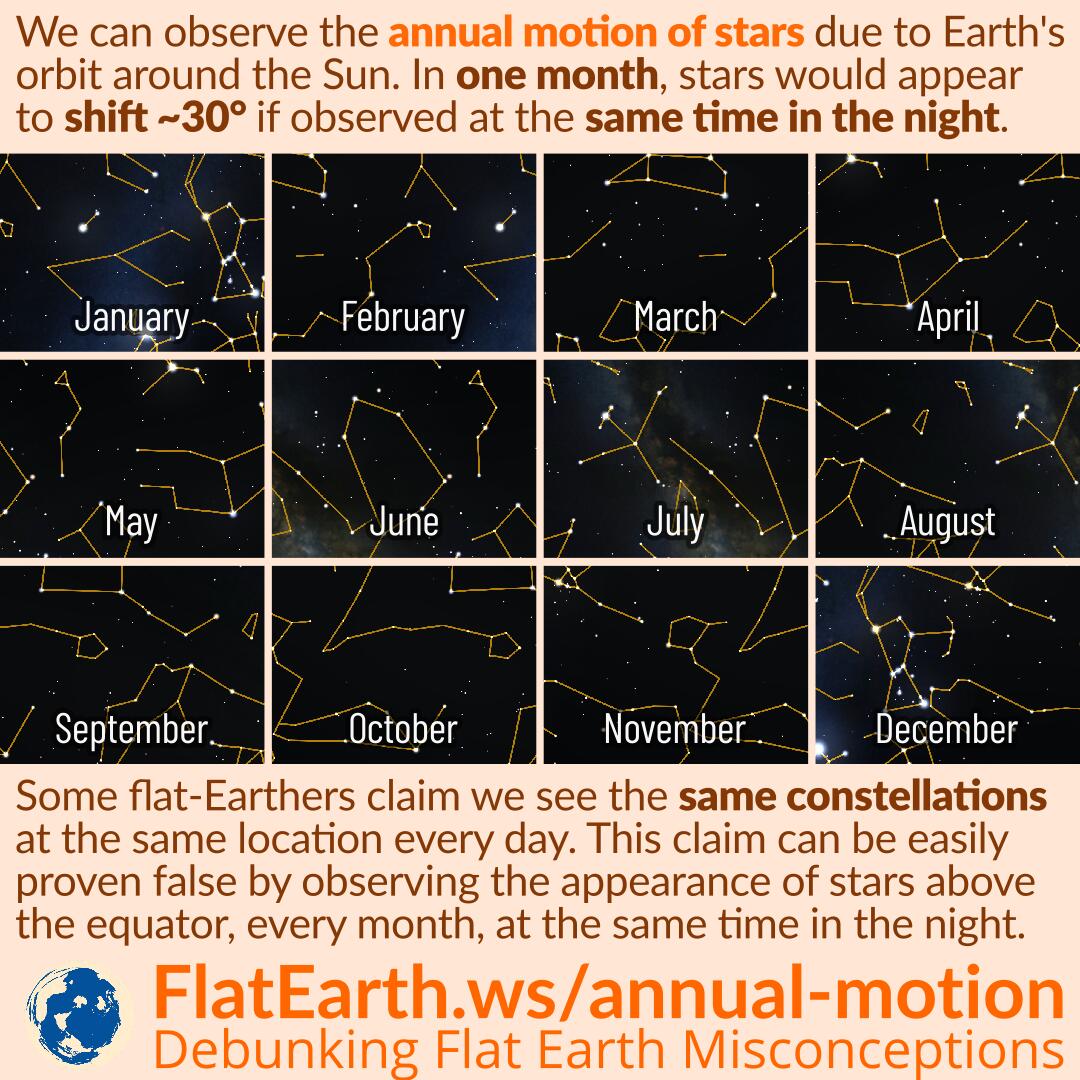On each day, we can observe stars to drift about 1° in their motion around the celestial pole. In a month, they will appear to have moved about 30° when observed at the same time in the night. In a year, they will be back to their original positions as the same day in the previous year. The observation is the basis of the solar calendar system we are using today.
Some flat-Earthers claimed that the stars appear the same every night, and they would erroneously conclude that the Earth is stationary. In reality, stars are shifting about 1° every day.




